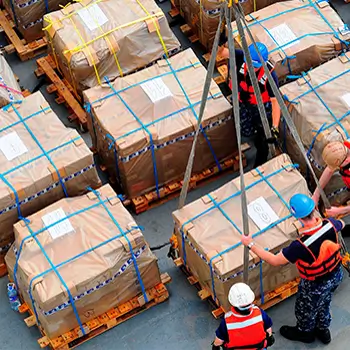
Importers achieve cost savings through the First Sale rule
In today’s globalized economy, importers are continually seeking ways to reduce costs and improve their competitive edge. One effective strategy savvy importers employ is utilising the First Sale rule. This rule, although complex, can lead to significant cost savings by reducing the dutiable value of imported goods. In this blog post, we will explore what the First Sale rule is, how it works, and the benefits it offers to importers.
What is the First Sale Rule?
The First Sale rule is a customs valuation principle that allows importers to use the price paid in the first sale of goods, rather than the final sale, as the basis for customs duties. This rule can be particularly advantageous when goods pass through multiple hands before reaching their final destination. Essentially, it allows the importer to declare the value of the goods at the first point of sale, often resulting in a lower dutiable value and, consequently, lower import duties.
How Does the First Sale Rule Work?
To understand how the First Sale rule operates, consider a typical international supply chain:
- Manufacturer: A manufacturer produces and sells goods to a middleman or trading company.
- Middleman/Trading Company: The middleman then sells the goods to the importer.
- Importer: The importer brings the goods into the country and pays customs duties based on the declared value.
Under the standard transaction value method, the customs duties would be calculated based on the price the importer pays to the middleman. However, under the First Sale rule, the importer can declare the value based on the price paid by the middleman to the manufacturer, which is usually lower.
Steps to Implement the First Sale Rule
- Establishing the First Sale: The importer must demonstrate that the sale between the manufacturer and the middleman is bona fide, meeting specific criteria set by customs authorities.
- Documentation: Adequate documentation, including invoices, proof of payment, and agreements, must be maintained to substantiate the first sale.
- Compliance: The transaction must comply with the customs regulations and guidelines of the importing country.
Benefits of the First Sale Rule
- Cost Savings: The primary benefit is the reduction in customs duties. By using the lower first sale price, importers can significantly decrease the amount payable in duties.
- Improved Cash Flow: Lower duties mean less money tied up in customs payments, improving the company’s cash flow.
- Competitive Pricing: Cost savings can be passed on to customers through lower prices, enhancing the importer’s competitiveness in the market.
- Efficiency in Supply Chain Management: Understanding and leveraging the First Sale rule encourages importers to optimize their supply chain, potentially leading to more efficient operations.
Challenges and Considerations
While the First Sale rule offers substantial benefits, it is not without challenges:
- Complex Documentation: Maintaining the necessary documentation can be cumbersome and requires meticulous record-keeping.
- Regulatory Scrutiny: Customs authorities may scrutinize first-sale claims closely to ensure compliance with all legal requirements.
- Legal and Compliance Costs: Importers may incur additional costs for legal advice and compliance to properly implement the First Sale rule.
Conclusion
The First Sale rule is a powerful tool for importers looking to reduce costs and enhance their competitive edge. By understanding and correctly implementing this rule, businesses can achieve significant savings on customs duties, improve cash flow, and offer more competitive pricing to their customers. However, it requires careful planning, thorough documentation, and strict compliance with customs regulations. For those willing to navigate its complexities, the First Sale rule can be a game-changer in international trade.
By leveraging the First Sale rule, importers can turn a complex regulation into a strategic advantage, driving growth and profitability in an increasingly competitive global market.





